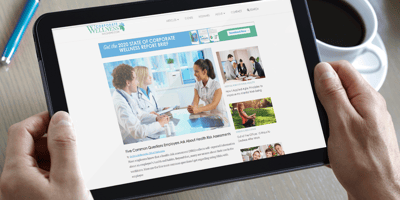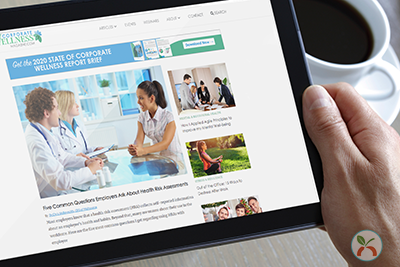This article by Chris McReynolds, CEO of Wellsource originally appeared in Corporate Wellness Magazine. Click here to read the original article.
Most employers know that a health risk assessment (HRA) collects self-reported information about an employee’s health and habits. Beyond that, many are unsure about their use in the workforce. Here are the five most common questions I get regarding using HRAs with employee populations.

Why should I include an HRA as a part of my wellness strategy?
An evidence-based HRA is the gateway to every successful workplace wellness program for two reasons. First, an HRA gives each employee a snapshot of their overall health and future quality of life. A quality HRA will generate a personalized report for each employee that helps them identify the aspects of their lifestyle that increase their risk for chronic disease. This helps the employee become more proactive about their behavior choices, which helps prevent long-term health conditions or improve current ones. When an employee shares the HRA results with their healthcare provider, valuable conversations can happen about prevention and testing. A disease may be diagnosed earlier which will, in turn, increase the effectiveness of treatments while lowering their cost.
Second, the data that a comprehensive HRA captures helps wellness program coordinators identify and predict group-level risks for preventable chronic disease. This information informs where to focus resources and disease prevention efforts that will result in healthier, more productive employee populations.
Will an employee’s results impact their benefits or insurance eligibility?
Because of federal regulations such as the Americans with Disabilities Act (ADA), the Genetic Information Nondiscrimination Act (GINA), and the Health Insurance Portability and Accountability Act (HIPAA), it’s illegal for employers and health plans to discriminate against an employee on the basis of HRA results.
Isn’t it illegal for employers to see protected health information (PHI) and personally identifiable information (PII)?
Knowing specific health information is critical for health and wellness professionals to offer appropriate interventions to each employee. While it is permissible, under certain guidelines and with the proper disclosures ahead of time, for an appropriate individual within an organization to view employees’ results, employers often prefer to engage with insurance brokers and wellness companies to administer the HRA. In this arrangement, employers can then view aggregated results to understand their employees’ top health concerns, discover the health habits employees are most interested in changing, and measure program effectiveness.
How long will the HRA take out of an employee’s workday?
A quality HRA should take less than 15 minutes to complete. In that short amount of time, health and wellness managers can gain a lot of self-reported data, such as what’s stressing out employees, how they feel about their work culture of health, and their risk for future diseases.
Is it worth the cost?
Well-designed wellness programs that include an HRA with feedback, combined with follow-up health intervention and education programs, improve habits and health. That’s why the Community Preventive Services Task Force recommends HRAs be used to develop health initiatives among workforce populations. However, an employer won’t experience cost-savings overnight. According to the RAND Workplace Wellness Programs Study, employers start to see lower healthcare costs at about the fifth year.








